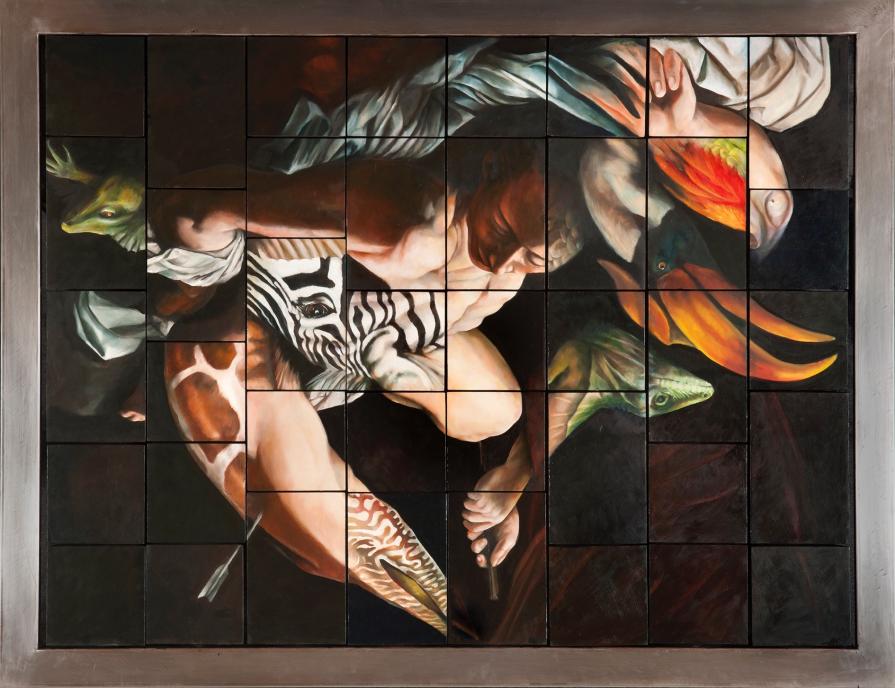
"San Sebastiano"
My art expresses itself through a mobile code, that is an autograph brand but, above all, a linguistic scheme between aesthetics and content. My works are pictorial puzzles offering multiple compositions, freely constructible or deconstructible. By rotating the parallelepipeds on a grid you can compose an image or interweave different images. An interaction with the viewer, who will be able to change the sequential order and, above all, to enter the dynamic principle of the original thought, completing a work that requires manual actions, tactile contact, active imagination and orientation of visionary imagination: a mobile code that reinvents the world on the strong roots of the world itself, thus cementing the foundations of memory, thus establishing the curve of this long line of horizontal time.
San Sebastiano
In our everyday life, constantly threatened by fundamentalist religious ideologies, the iconography of Saint Sebastian is linked to the theological meaning of the theme of martyrdom. The term martyr (from the Greek word μάρτυς, that means "witness") came to be applied to those who suffered hardships for their faith. The body of the saint symbolizes mankind pierced by the arrows of religious obscurantism; it shows martyrdom in the name of a faith in which the ideas of "right" and "true" are at the discretion of somebody who sits as a judge and charges the other of being "unfaithful". The “San Sebastiano”stands up as a symbol of man living in a historical moment in which the so-called "holy wars" deny freedom to live and to hope for a peaceful future based on a fruitful inter-religious dialogue.
















Comments 3
Say something